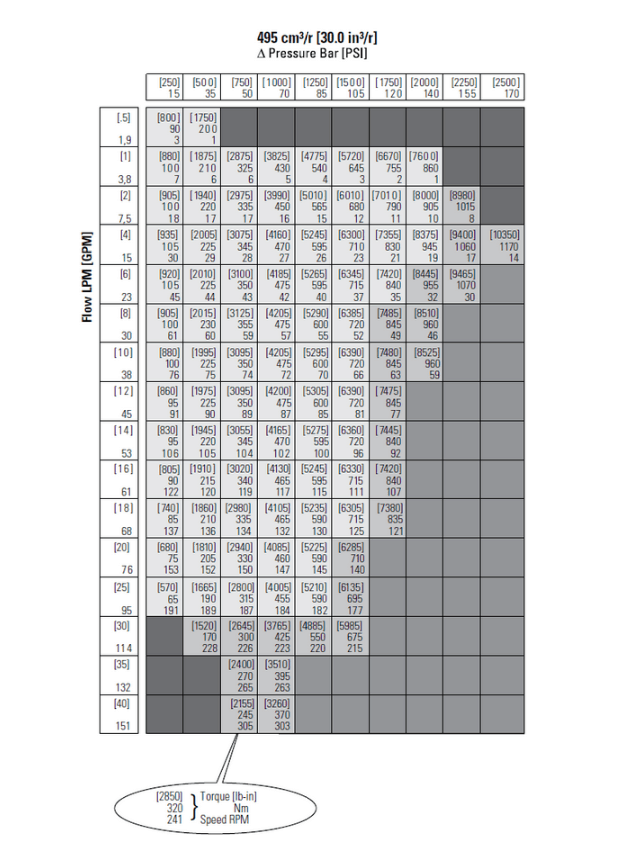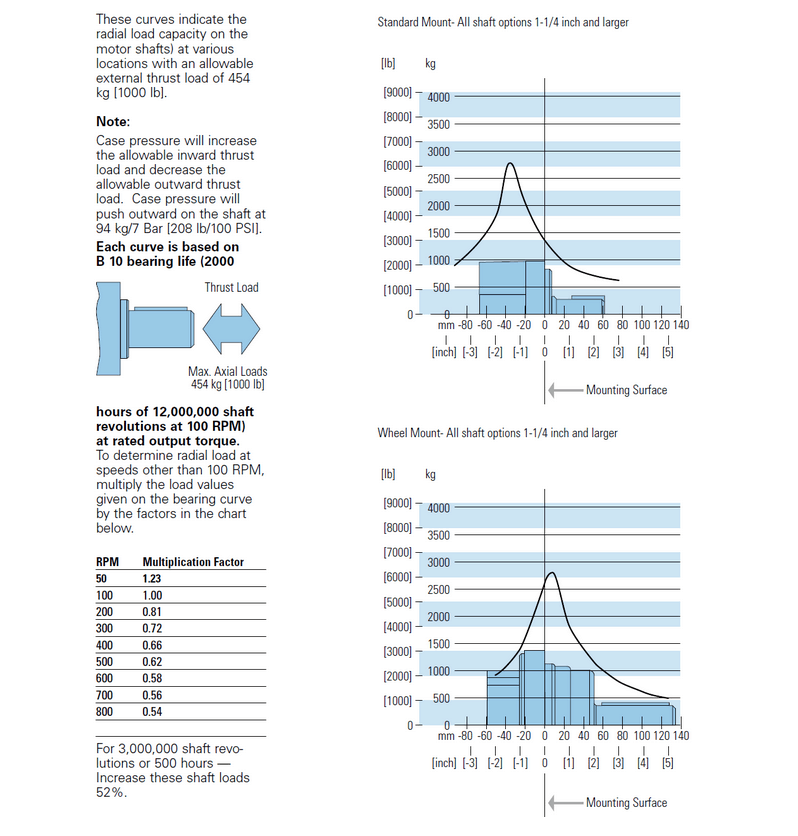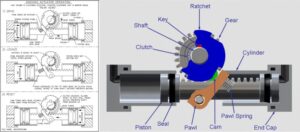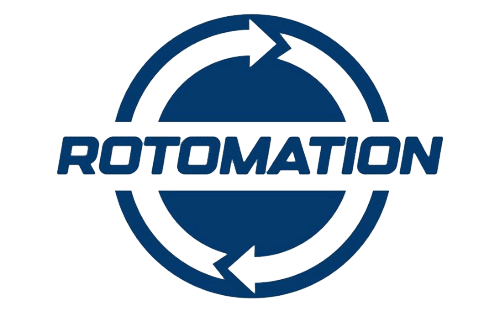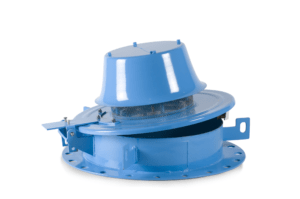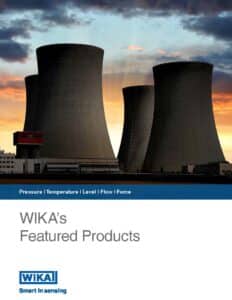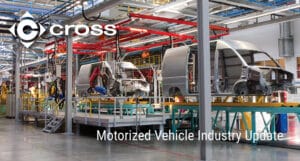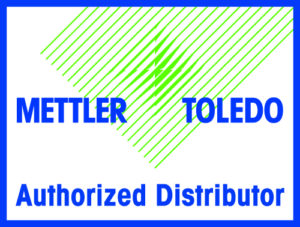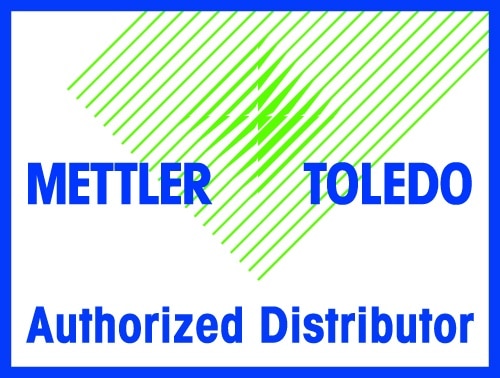Paul Badowski | October 9th, 2014
Having a lot of options is usually a great situation, but sometimes it can cause confusion. For instance, Low Speed High Torque motors can solve a lot of mobile and industrial machinery problems. But, because there are so many options, the issue can be finding the right motor for the right application.
Here’s an example I worked on: I had to get a 29 cubic inch displacement hydraulic motor, with wheel motor configuration and 20 GPM pump flow, to operate at around 1500 psi.
If this sounds like a fairly detailed specification, it was! There are some openings for porting and shaft style, but I had a pretty good idea of where to go. I decided to use an Eaton CharLynn Low Speed High Torque motor and opened up the catalog.
As I went through the Eaton Catalog, I was confronted with a bevy of motor choices:
- J
- W
- H
- S
- T
- 2000
- 4000
- Delta
- 4000 Compact
- 6000
- 10000
- VIS40
- and VIS45
My first step had to be to limit the options to only the motors practical to my application. Based on the 20 GPM flow and 29 CIR displacement, I eliminated all but the 2000, 4000, and 6000. This was wonderful, except I still had three hydraulic motors to choose from! Luckily, for each series I can view/print a cut sheet which shows the torque and RPM for the available flow.
Even though all of the motors had the same displacement, you can see a difference in torque for each – depending on gearing, bearing arrangements, and efficiencies (the numbers still appeared to be fairly close).
I next went to a chart that can be a little confusing: the B10 bearing life chart. This chart tells you the radial load that the shaft bearing can handle – and the distance from the center point – and still maintain an estimated life of approximately 2000 hours operating @100 RPM. There are different charts for wheel and standard shafts, as well as corrections for different RPM’s.
This is a ton of information packed onto several charts! REMEMBER – all of this is based on applying a maximum load on the shaft at a constant speed, which is not a normal situation in most applications. If your load is supported, and proper maintenance is in place, the bearing can have a much longer life. These are only estimates. At 2001 hours the bearings do not fall apart, but based on data from years of scientific testing, these estimates can be used to guide the motor sizing.
Even after going through all of this information, I had not landed on the correct motor for my application. If a customer attempted this process on their own, this is normally where I would get the phone call saying, “Paul, there are three motors which fit my application, which one should I use?”
The Eaton CharLynn 2000 series hydraulic motors are probably one of our most popular products. They are used on thousands of pieces of equipment worldwide and have been for years. They are in stock and are the least expensive option of the choices shown. For this application, I was already leaning towards this option, but figured it was best to make a quick phone call.
Before I made the recommendation, I called a good friend, and Eaton ACE Team Member, Paul Fiecke, for a quick check. Paul has extensive field experience from system designs to machine startups and troubleshooting worldwide – I knew I had the right man on the phone. Eaton can offer an estimate from field and other test data on the service life of a motor and Paul was able to quickly supply some surprising information.
According to Eaton, based on my application data, the expected life of the 2000 series motor would be 570 hours – assuming a 40 hour work week – that is not even 15 weeks! If we stepped up to a 4000 series motor, the expected life doubled – but that was still not good.
If we chose a 6000 series motor, the expected motor life went to 5849 hours. Now that looked much better!
Once again, these are estimates based on historical data. At 5850 hours, the motor will not fall apart (or if supplied dirty hydraulic oil, you would never get near 5000 hours anyway), but this gives you a good estimate.
If, in reality, your application only operated at 200 psi for 80% of the time and jumped to 1500 psi for the remaining 20%, the service life of the smaller motors would go up exponentially. So a motor with a 1000 hour service life might be fine when more details are provided.
Another consideration is the equipment usage. Many pieces of equipment may only be used for several hours a week and then stored. If the duty cycle is lower, your motor choice will change.
Imagine if an OEM had put 50 or 100 vehicles in the field with two or four wheel motors on each vehicle. Then after 3-4 months, shaft seals start leaking and the motors start failing. This would get ugly! The correct product will keep the machine running and the OEM and END USER happy!
As they say, we’ve been to the dance a few times. Get myself, or one of our experienced Cross Fluid Power Account Managers, involved with your OEM application and we can help you find the correct motor for your application. As you can see, even when you think you’ve started with what appears to be a complete specification, there are additional questions which need to be answered to truly choose the best motor for your application.

